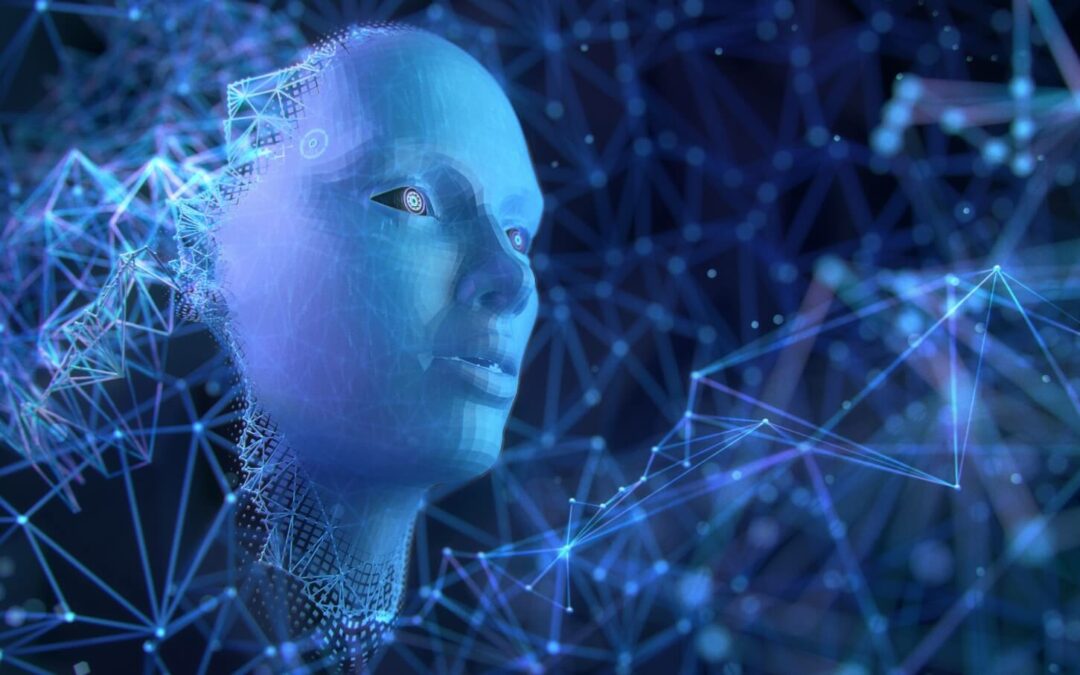‘The robots are coming – our jobs, our lives, our very society is under attack!’ bemoan the most sceptical. Others of a more optimistic persuasion, meanwhile, herald the advent of AI as nothing short of a cultural revolution, a watershed moment in the trajectory of human capability as we know it.
However things play out, on the grand stage, there’s little doubt that AI and chatbots in customer experience are set to transform commercial interactions in the short, mid, and long-term. Customer service, the way users interact with organisations, pathways to customer satisfaction, projections for business growth and more are entering a new, artificially-intelligent chapter.
Defining the Digital Workforce
The digital workforce, or digital employees, are rapidly becoming a key trend in customer service; indeed, they are the actors in the business trend of digital transformation. But what exactly do these terms mean?
In essence, you can consider your ‘digital employees’ as those elements of your operation that perform transactional process steps – responding to customers, issuing refunds, or routing enquiries, for instance – touchless, using automated tech.
Chatbots are a good example. They handle tasks which in times gone by would have required a human employee to perform: except the technology is capable of doing it faster, cleaner, more accurately – in a word, better.
This is part of the reason Salesforce predicted a 136% growth rate in the service industry’s use of AI chatbots in the coming 18 months (Salesforce).
It’s also where some of the worry around AI stems from; the idea that robots are here to ‘steal’ our jobs.
But largely, the fear is misplaced. Rather, AI complements the work of human employees, helping them to do what they do at a higher standard.
For instance, AI chatbots can ease the burden of responding to routine and low-value enquiries, allowing human agents to focus on more significant priorities. Or, automated technology can rapidly sift through data and pull accurate analytics reports, something that would take a human a considerable amount of time to complete.
What is AI?
Taking things back to basics, artificial intelligence (or AI) refers to developing computer systems that can perform tasks that typically require human intelligence.
This would include activities that rely on things like:
- Learning
- Reasoning
- Problem-solving
- Interpretation
- Informational exchange
Artificial intelligence has a profound impact on customer interactions, enabling businesses to provide personalised experiences, anticipate customer needs, and resolve issues quickly.
What is a Chatbot?
Artificial intelligence underpins chatbot technology.
A chatbot is a computer program that uses natural language processing (NLP) and machine learning algorithms to simulate human conversation.
Chatbots can be programmed to handle a wide range of customer enquiries, providing fast and accurate responses while reducing the workload for human agents.
AI technology enables chatbots to understand and interpret customer queries and respond with relevant information or actions.
The AI / CX Origin Story
AI technology has come a long way since its inception in the 1950s. The early years of AI saw the development of expert systems and rule-based systems, which were impressive at the time – but fairly limited in their ability to learn and adapt to new situations.
However, breakthroughs in machine learning and deep learning in the 2010s led to the development of more sophisticated AI systems.
These days, the software is capable of processing vast amounts of data and making predictions with high accuracy and, today, AI is an integral part of customer experience management, providing businesses with valuable insights into customer behaviour and preferences.
A Distinctly Online Customer Experience
In today’s digital age, the customer experience has primarily shifted to online spaces.
This has meant that businesses need to prioritise creating a streamlined and engaging omnichannel journey for their customers, using future-proof and intelligent technology such as our Virtual Contact Centre.
Unlike traditional CX, online customer experience (or digital CX; DCX) is multifaceted, spanning across touchpoints including:
- Social media
- Websites
- Mobile apps
- Chat-based interactions
As you can see, customers can interact with businesses through a wide range of varying touchpoints, each with its own requirements and nuances. It is essential for businesses to provide a cohesive and consistent experience across all digital platforms.
The numbers are plain to see. In a collaborative report conducted by Forrester and Adobe, companies that deployed a strong omnichannel CX strategy experienced a very healthy 10% year-on-year business growth, a 10% increase in average order value, and a 25% increase in close rates (Forrester, Adobe).
How AI & Chatbots Transform Online Customer Experience
AI-powered chatbots – one element of an omnichannel DCX – are totally transforming the way customers interact with businesses online. That includes all organisations, from charities to retailers, construction firms to the public sector, and beyond.
Chatbots enable more personalised and efficient, 24/7 customer service, giving users instant self-service assistance and support. This way, organisations can improve customer satisfaction, reduce costs, and drive growth.
Similarly, artificial intelligence can analyse customer feedback and provide insights to improve the customer journey, empowering chatbots to handle routine enquiries, and freeing up human agents to focus on more complex issues.
In short, AI and chatbots are vital ingredients for any business looking to enhance its CX and stay ahead in the digital era.
Customer Interaction Benefits
In addition to streamlining customer interactions – a real boon for both users and agents – AI and chatbots offer several benefits to the online customer experience. Here are just 3 key benefits:
- Personalised Interactions
By leveraging data and machine learning algorithms, AI and chatbots can personalise customer interactions at scale – using customers’ names and accessing their history with the organisation, for instance.
This means businesses can tailor their messaging, offers, and recommendations based on each customer’s unique preferences and behaviours.
At a time when personalisation is premium and a real competitive difference-maker for businesses, this ability to provide a uniquely-tailored service instantly stands as a huge advantage.
- 24/7 Availability
Unlike human agents, AI and chatbots are available 24/7, allowing businesses to provide customer support and service outside of regular business hours on the channel they prefer, whether that be on a website or in social media.
Similarly, AI-powered chatbots do not make mistakes, and can access relevant customer data instantly – from a centralised system of records, such as the one our VCC enables.
This ensures that customers can get the help they need when they need it, improving satisfaction and reducing churn.
- Faster Response Times
Chatbots and AI can handle a high volume of customer inquiries simultaneously and instantly, reducing wait times and increasing customer satisfaction. Where a human agent can realistically be expected to deal with one (or, at most, a handful) of customer interactions at any time while maintaining a required standard of service, there is no ceiling on how many enquiries a chatbot is capable of handling.
To a contact centre operator, this theoretically limitless capacity is incredibly promising.
Chatbots can also provide immediate answers to the most common questions and requests, tasks like changing account information, requesting delivery updates or product support.
This frees up human agents to focus on more complex issues, where a human touch is genuinely required. Consequently, you’re able to increase the value and productivity potential of every agent.
Best Practices For Successful AI Deployment
When it comes to deploying AI and chatbots in customer service teams, there are some best practices you can follow to ensure a successful implementation.
These top tips can help you maximise the benefits of this technology while maintaining a positive customer experience.
1. Commit to Digital Transformation
Embrace a digital transformation mentality and commit to integrating future-proof software into your customer experience management strategy – along with carrying out continuous improvements. This will help you keep pace with evolving customer expectations and stay competitive in the digital age.
2. Realign Agents to Higher Priorities
Utilise your human agents to focus on higher priorities that require a personal touch, such as complex problem-solving or building relationships with customers. This will improve their productivity, enabling them to deliver more value to your customers and drive business growth.
3. Centralise Data & Ensure Accuracy
Centralise your data and ensure informational accuracy to provide a seamless and consistent customer journey across touchpoints. This will help you deliver a better customer experience and make informed business decisions based on customer feedback. High-quality data unified communications software such as our Virtual Contact Centre should make this smooth and easy.
4. Don’t Forget the Human Touch
Remember the value of a genuine human touch, even when using chatbots and AI. The advent of AI does not equate to the demise of human agents – in fact, it’s quite the opposite. AI empowers your staff, equipping them to do priority work faster, and at a better standard. So don’t make the mistake of completely eliminating humanity from your CX. It’s people at the heart of quality communications, after all.
5. Personalise Customer Interactions
You can personalise your chatbot customer interactions by leveraging customer data to provide tailored recommendations, offers, and support. This will help build stronger relationships with customers and increase customer satisfaction.
6. Align Chatbots With Brand Values
Ensure you align your chatbots with your brand mission, vision and values to maintain consistency across all customer interactions. This will help build trust and loyalty among your customers. There’s nothing worse than a chatbot that doesn’t sound or behave like the organisation it’s meant to represent.
7. Train & Upskill Human Agents
Implement training programs for your human agents to work effectively alongside and with chatbots and AI. This will enable them to handle complex customer issues, but more than this, it fosters market leadership within your organisation as you invest in people, cultivating a team that’s proficient in the latest and most significant industry developments.
8. Allow Agents to Take Control of Chat Interactions
Allow your agents to take control of chat interactions when necessary to ensure a smooth and positive customer experience. It’s not beyond the realms of possibility that, occasionally, a customer will present a more nuanced enquiry that AI isn’t equipped to deal with. At times like this, it’s essential for a human agent to take the reins seamlessly.
Customer Satisfaction in the Age of AI
AI and chatbots have revolutionised the way businesses interact with their customers online, and for customer support teams, it is a transitional moment.
Customer relationship management has expanded, and now encompasses digital customer experience strategy; it’s possible for the entire customer journey to occur without any interaction with a human agent, and AI-powered tools are stepping up to assist in digital customer experience management tasks.
Clearly, organisations will need to exercise some adaptability. But it’s worth doing; bringing AI into your workflows can:
- Improve the digital customer experience journey
- Help gather customer feedback for ongoing improvements
- Provide rapid and personalised interactions that encourage brand loyalty
- Maximise agent value and feed into a customer-focused strategy
And, with AI looking to grow ever more capable, that is just the tip of the (digital) iceberg.
Looking to improve customer loyalty, increase agent value, provide a seamless omnichannel experience and maximise customer communications? Our Virtual Contact Centre could be for you. Contact us today to find out more about our future-proof technology.


